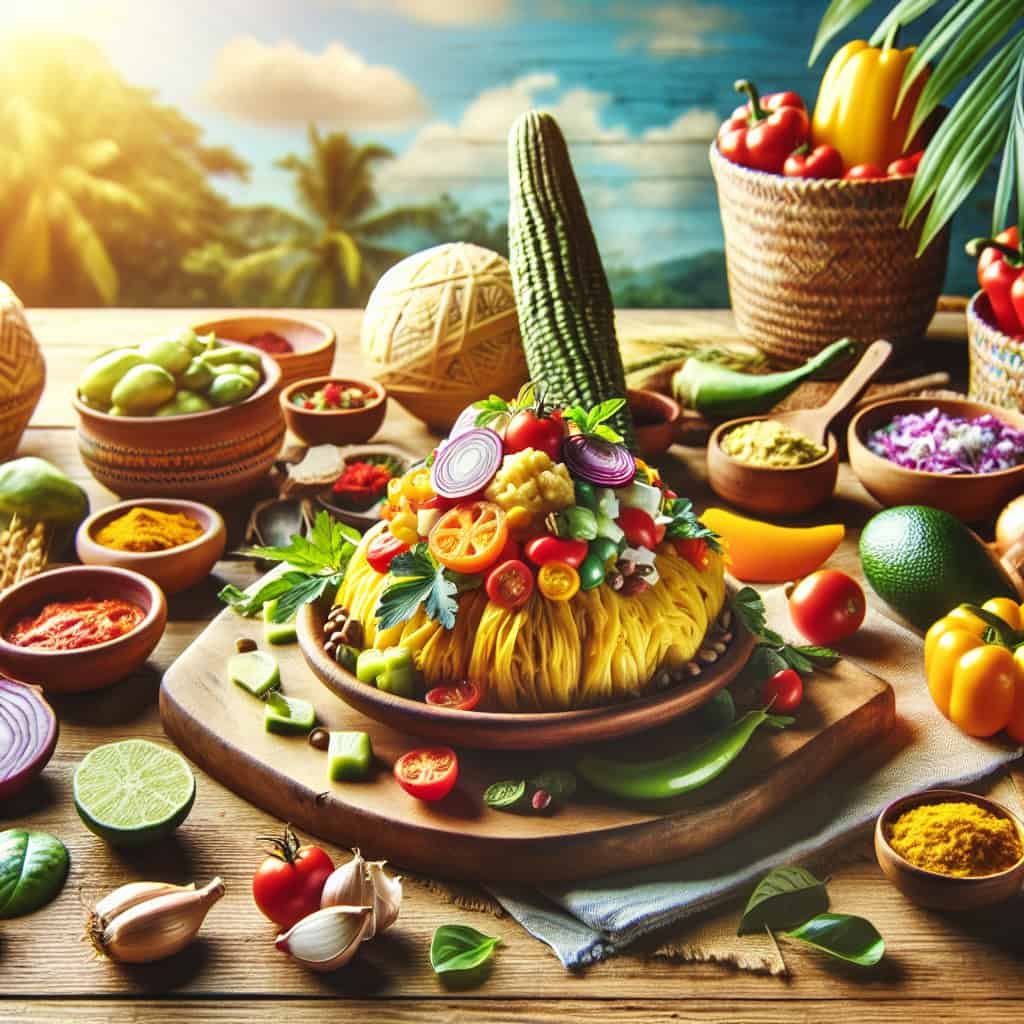Are you a vegetarian or vegan who is curious about the culinary offerings of traditional Nicaraguan cuisine? Well, you’re in luck! Nicaragua, with its rich agricultural heritage and diverse range of ingredients, has a surprising array of vegetarian and vegan-friendly options to tantalize your taste buds. From hearty bean dishes and plantain-based delights to flavorful vegetable soups and refreshing fruit salads, traditional Nicaraguan cuisine has a little something for everyone. So, whether you’re a local exploring your dietary preferences or a traveler experiencing the wonders of this beautiful country, get ready to be pleasantly surprised by the vegetarian and vegan-friendly options available in traditional Nicaraguan cuisine.

Traditional Nicaraguan cuisine
Nicaraguan cuisine is rich in flavor and influenced by indigenous, Spanish, African, and Caribbean culinary traditions. The vibrant and diverse cuisine of Nicaragua offers a range of options for both vegetarians and vegans. Let’s explore the traditional dishes, common ingredients, regional variations, cooking classes, and restaurants that cater to plant-based diets in Nicaragua.
Overview of traditional Nicaraguan dishes
Traditional Nicaraguan cuisine boasts a variety of hearty and flavorful dishes that showcase the country’s culinary heritage. From gallo pinto, a popular breakfast staple made of rice and beans, to vigorón, a dish consisting of yucca, cabbage, and pork rinds, Nicaraguan cuisine highlights the country’s rich food culture. Other renowned dishes include nacatamales (a type of tamale), indio viejo (a corn-based soup), and baho (a slow-cooked beef and plantain dish wrapped in banana leaves). These dishes are often centered around meat, but vegetarian and vegan alternatives can be found.
Common ingredients in Nicaraguan cuisine
Nicaraguan cuisine revolves around locally sourced ingredients, including staple foods such as rice, beans, tortillas, plantains, and corn. These ingredients form the basis of many traditional dishes, offering a substantial and flavorful foundation. Fresh fruits and vegetables like tomatoes, onions, bell peppers, avocados, and tropical fruits are also commonly used in Nicaraguan cuisine. Herbs and spices like cilantro, oregano, garlic, and achiote add depth to the dishes. Additionally, dairy products such as cheese and sour cream are often incorporated into traditional recipes, but can easily be substituted to accommodate vegetarian and vegan dietary preferences.
Vegetarian options
Vegetarian-friendly dishes in Nicaraguan cuisine
Although meat plays a prominent role in traditional Nicaraguan dishes, there are several vegetarian-friendly options available. One popular dish is the famous gallo pinto, which can be enjoyed without the addition of meat and still provide a delicious and satisfying meal. Vegetarian nacatamales are also a great choice, as they contain a mixture of vegetables and masa (corn dough) wrapped in a plantain leaf. Other vegetarian options include yucca fritters, fried plantains, and various bean-based dishes.
Modifying traditional dishes to make them vegetarian
Many traditional Nicaraguan dishes can be easily modified to accommodate vegetarian diets. For example, instead of using meat in baho, a plant-based protein like chickpeas or tofu can be used. In indio viejo, the meat can be replaced with lentils or diced vegetables to create a hearty and flavorful vegetarian version. By substituting animal-based ingredients with plant-based alternatives, traditional Nicaraguan dishes can be enjoyed by vegetarians without compromising on taste or authenticity.
Popular vegetarian street food options
Street food is an integral part of Nicaraguan culture, and fortunately, there are several vegetarian-friendly options available. One must-try street food for vegetarians is the quesillo, a soft tortilla filled with cheese, onions, and pickled vegetables. Other vegetarian street food options include tostones (fried plantains), vigorón (substituting the pork rinds with extra vegetables), and papa rellena (stuffed potato balls). These dishes can be found in food carts and stalls throughout Nicaragua, providing a convenient and delicious plant-based snack or meal.

Vegan options
Finding vegan options in traditional Nicaraguan cuisine
While traditional Nicaraguan cuisine often incorporates animal-based ingredients, there are still vegan options available for those following a plant-based diet. Many of the side dishes served alongside main courses are vegan-friendly, such as gallo pinto, yucca fritters, and fried plantains. Additionally, traditional Nicaraguan soups like sopa de mondongo (a tripe soup) can be modified to exclude meat and dairy, making them suitable for vegans. The key is to communicate your dietary preferences to the restaurant or food establishment, as they can often accommodate special requests.
Traditional dishes that are naturally vegan
Some traditional Nicaraguan dishes are naturally vegan, meaning they do not require any modifications to cater to a plant-based diet. Pupusas de arroz, for example, are rice-based patties filled with beans and cheese traditionally, but can be made without the cheese to create a delicious vegan option. Plátanos maduros (fried ripe plantains), vigorón (without the pork rinds), and nacatamales (using only vegetables) are other popular vegan dishes that can be enjoyed in Nicaragua.
Replacing animal-based ingredients with plant-based alternatives
To make traditional Nicaraguan dishes vegan, it is often necessary to replace animal-based ingredients with plant-based alternatives. For example, cheese and sour cream can be substituted with vegan cheese or cashew cream, providing a similar texture and flavor. Plant-based proteins like tempeh, tofu, or seitan can be used in place of meat in dishes like baho or indio viejo. By creatively using plant-based alternatives, vegans can savor the flavors of traditional Nicaraguan cuisine while adhering to their dietary choices.

Regional variations
(Writing is continued below)

